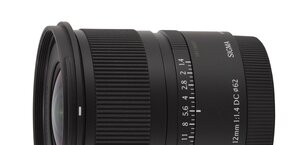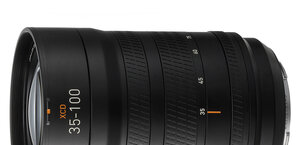Sigma C 35 mm f/2 DG DN
5. Chromatic and spherical aberration
Chromatic aberration
The optical construction of the Sigma C 2/35 features just one low dispersion element; it made us wonder whether it would be enough for good correction of longitudinal chromatic aberration. Photos below show clearly that aberration is not a serious problem but still at the maximum relative apertue you can notice some slight colouring of out-of-focus images. Mind you, it's nothing distinct and it disappears practically completely on stopping down so we don't think there is any reason to complain. |
Now let's check the situation of lateral chromatic aberration – its performance, depending on apertures and detector used, presents a graph below.

Please Support UsIf you enjoy our reviews and articles, and you want us to continue our work please, support our website by donating through PayPal. The funds are going to be used for paying our editorial team, renting servers, and equipping our testing studio; only that way we will be able to continue providing you interesting content for free. |
- - - - - - - - - - - - - - - - - - - - - - - - - - - - - - - - - - - - - - - - - - - - - - - -
It is clear that aberration weakly depends on both the relative aperture and dimension of the detector. You deal with a more or less constant level of 0.03-0.05%. As it is also the borderline between low and very low values in this category the tested lens should be only praised.
| A7R III, RAW, FF, f/2.0 | A7R III, RAW, FF, f/11.0 |

|

|
Spherical aberration
First photos of this chapter don't show any noticeable 'focus shift' effect. When it comes to circles of light reached before and behind the focal point they aren't identical, with different layout of concentric circles inside, but these differences aren't very pronounced. You can say that the Sigma C 2/35 doesn't have any significant problems with correction of spherical aberration.
| A7R III, f/2.0, before | A7R III, f/2.0, after |

|

|






